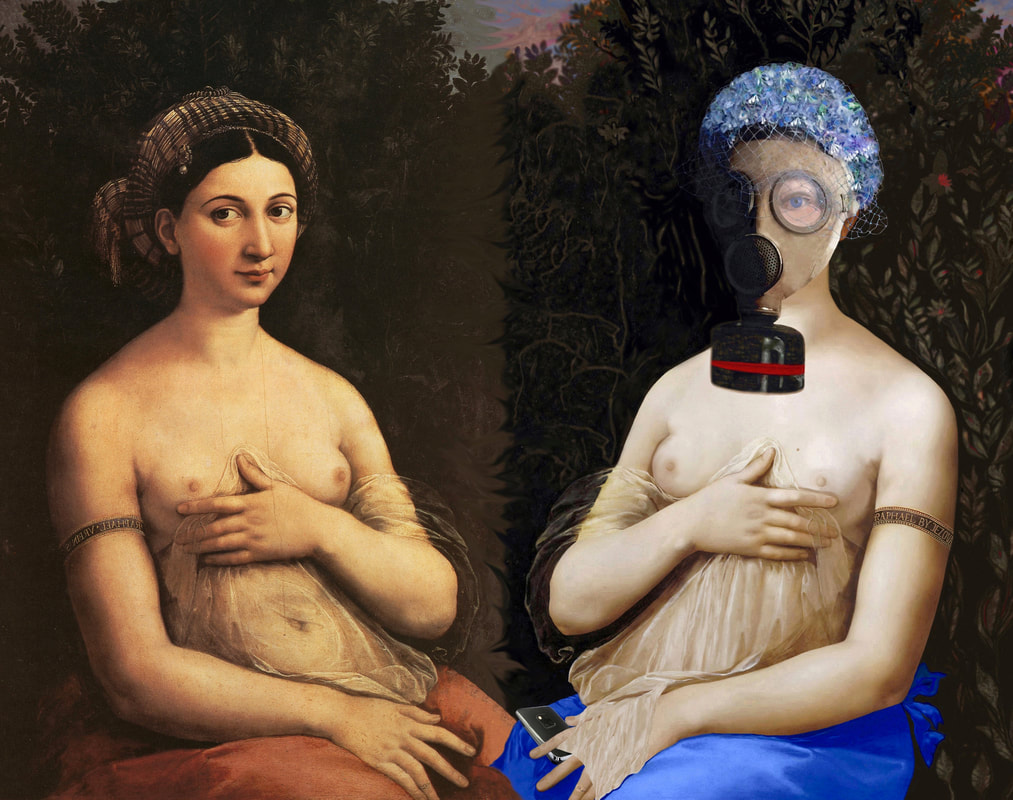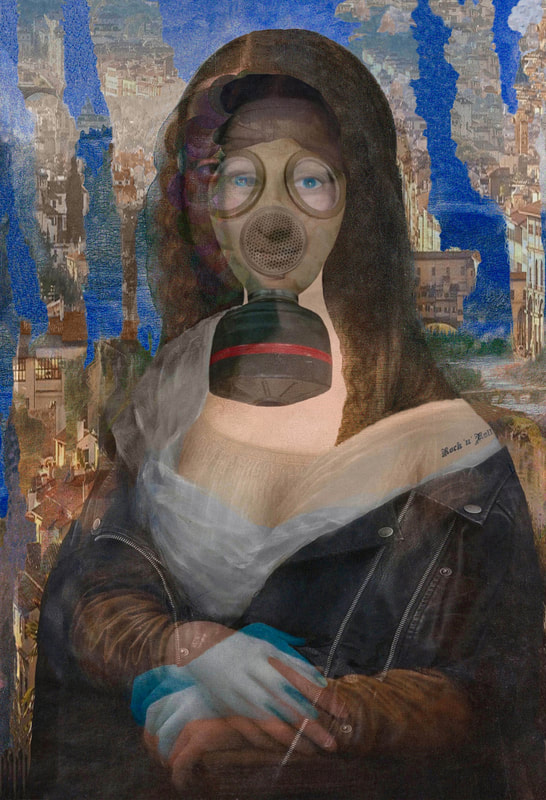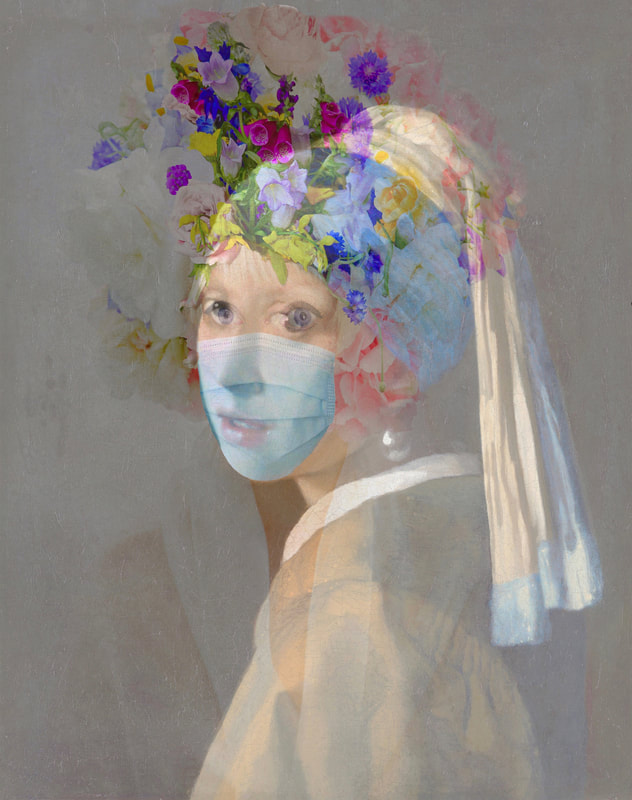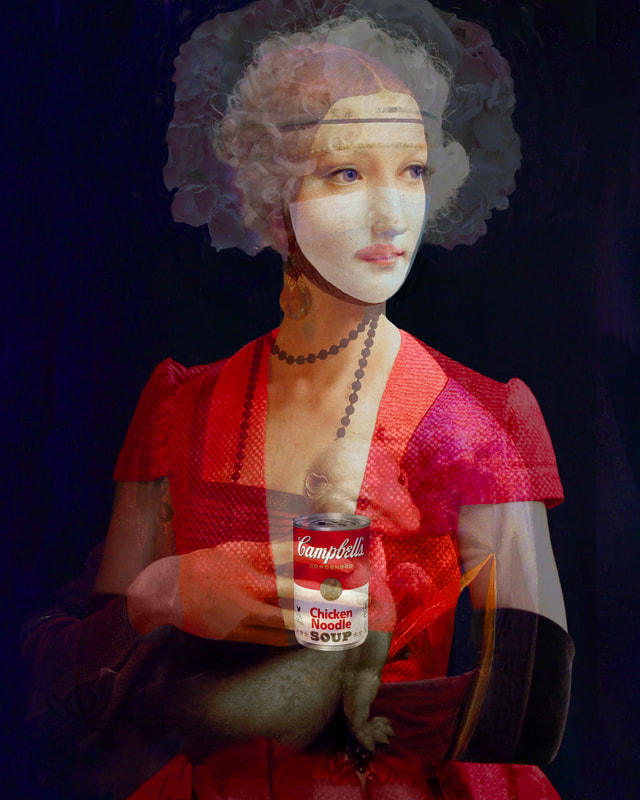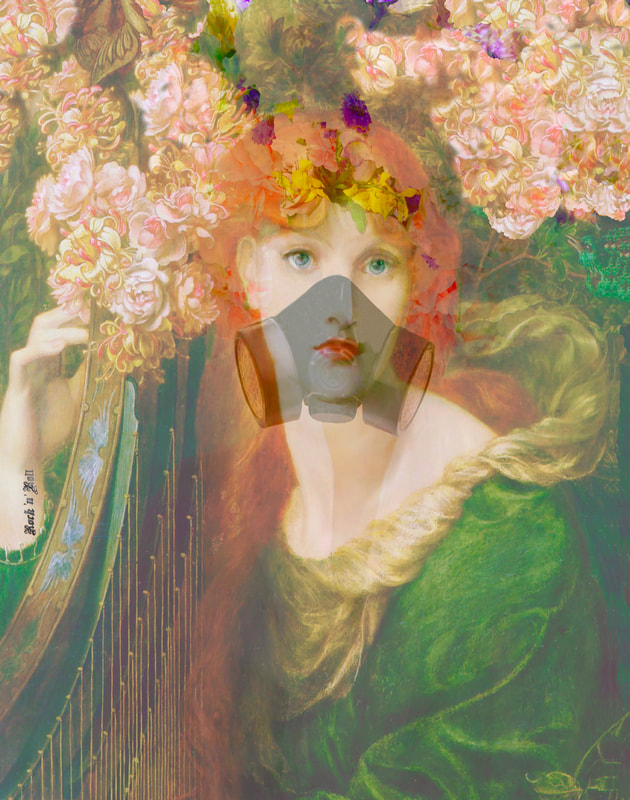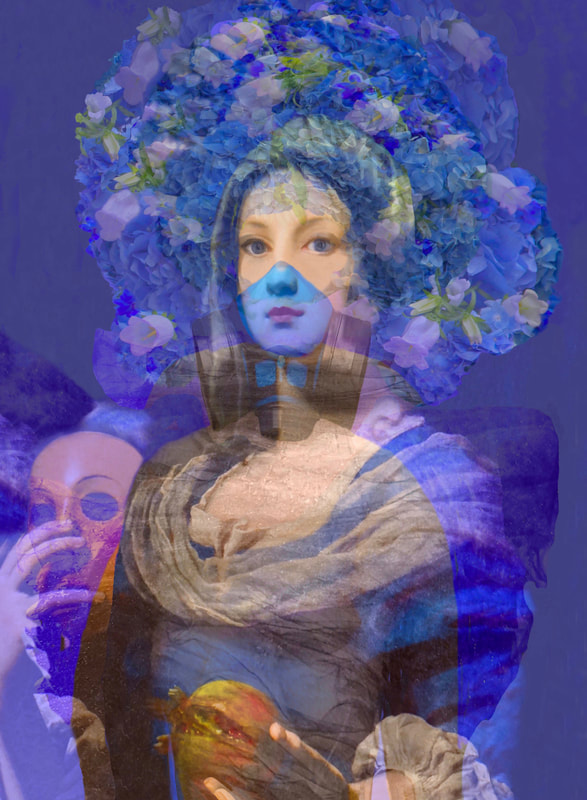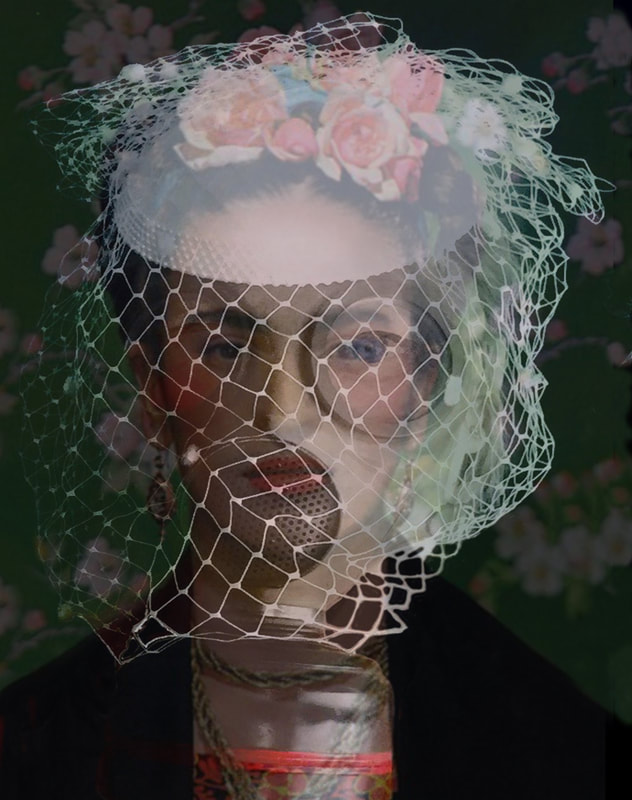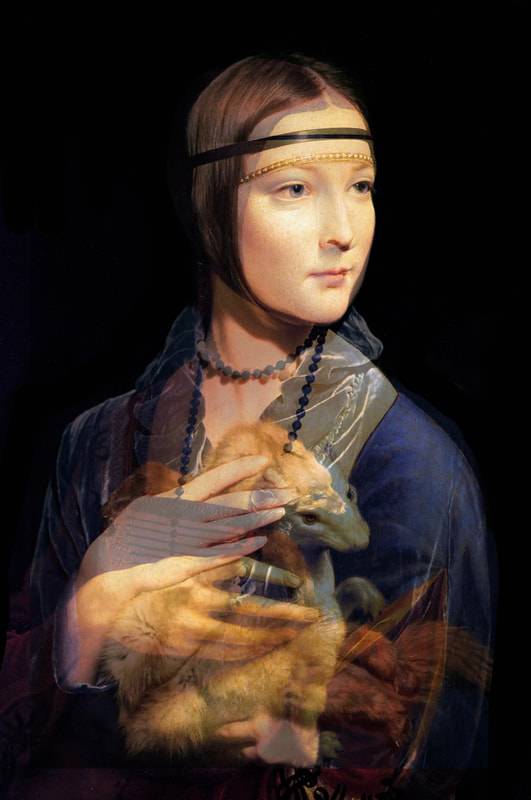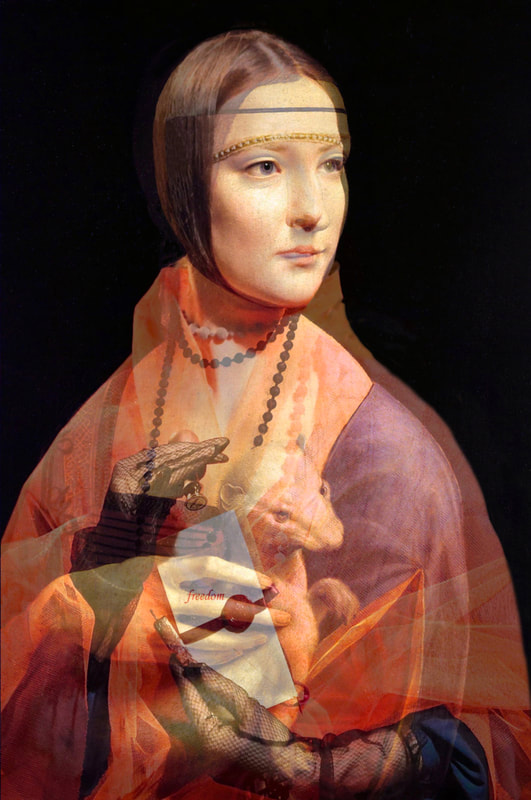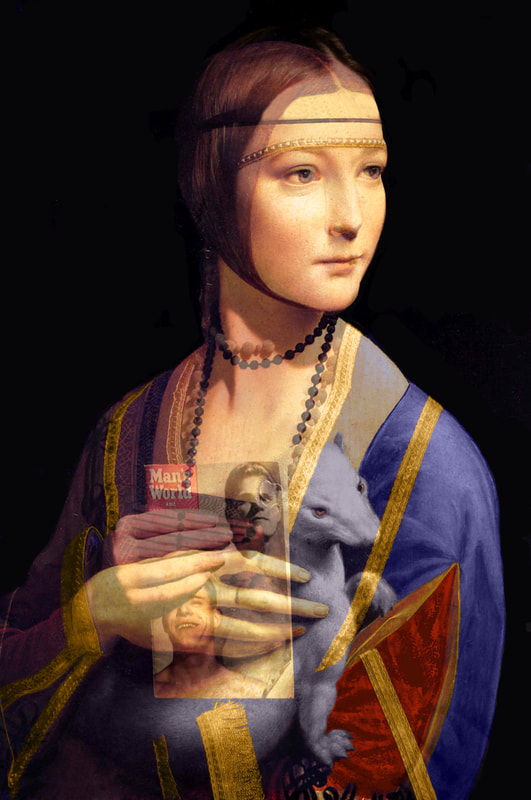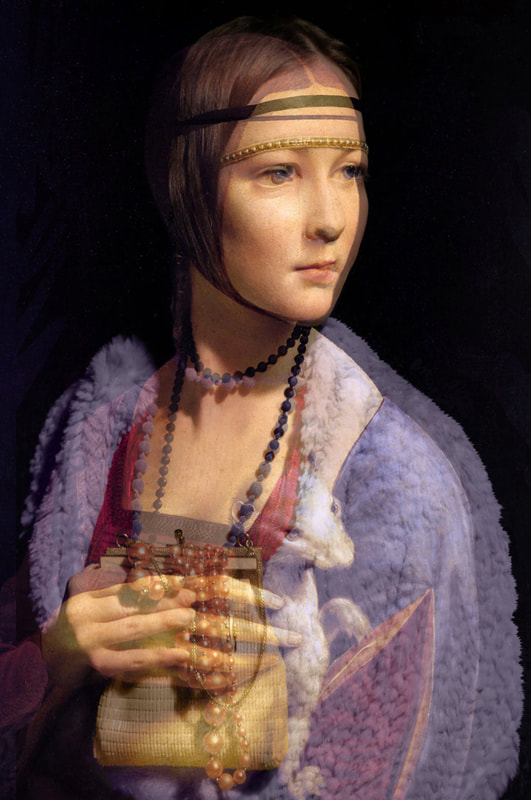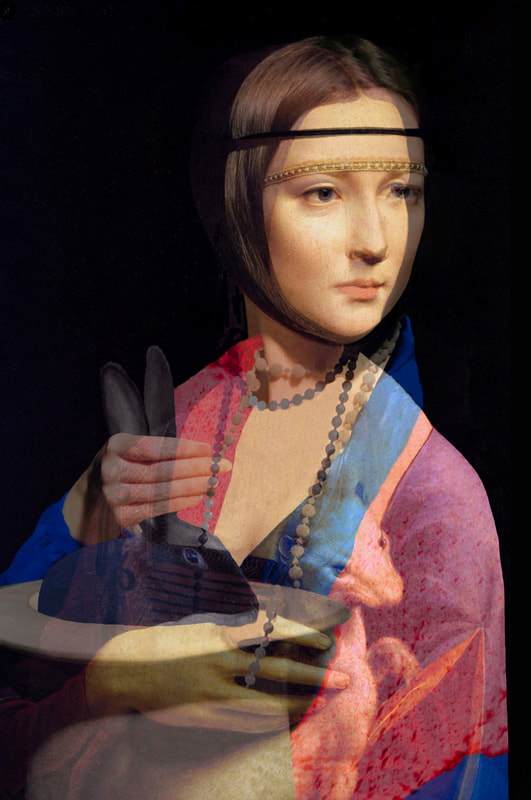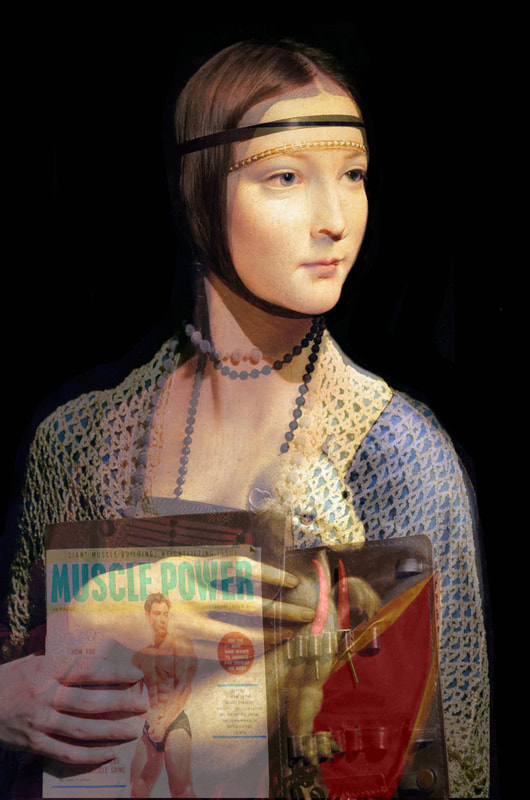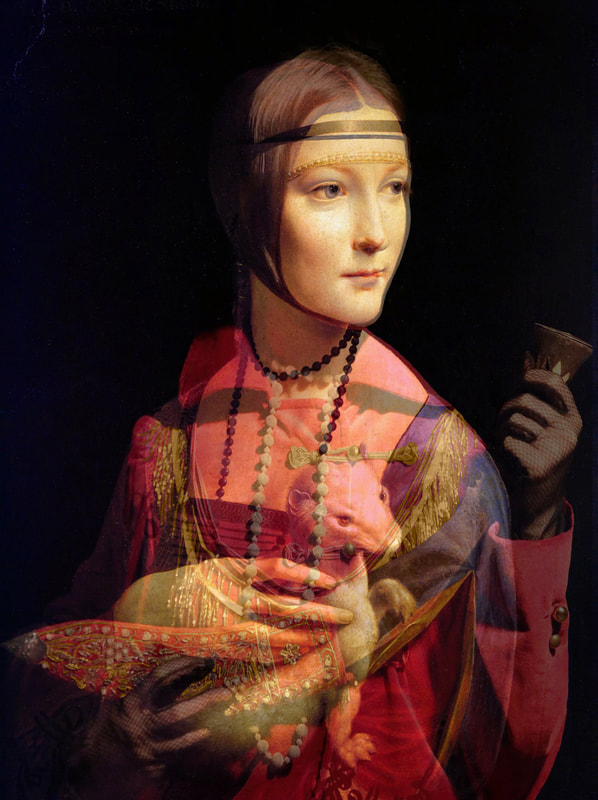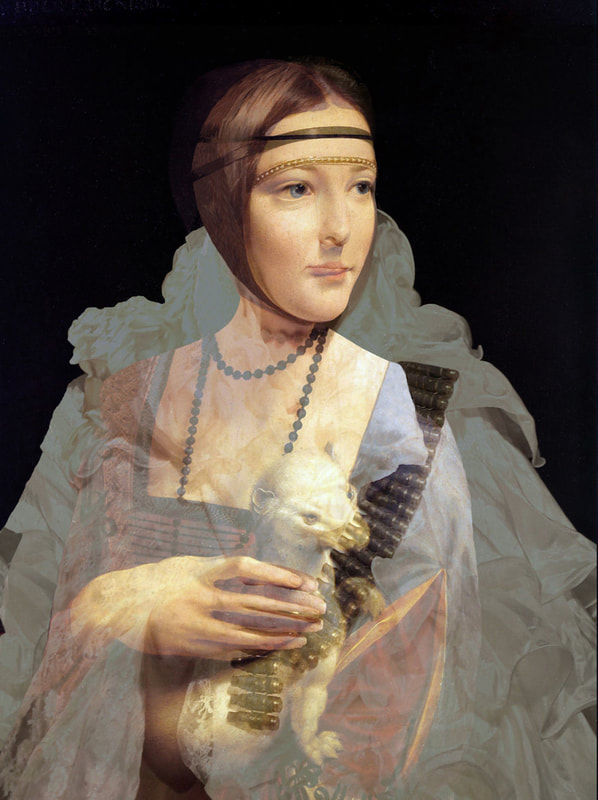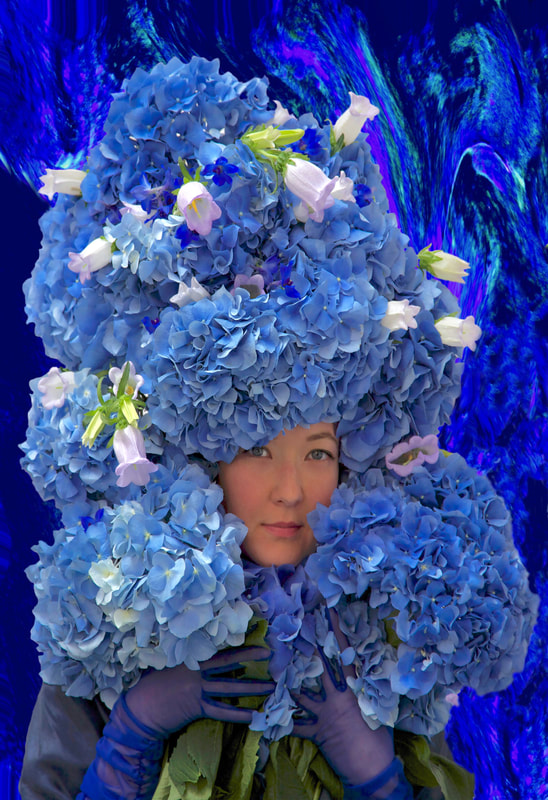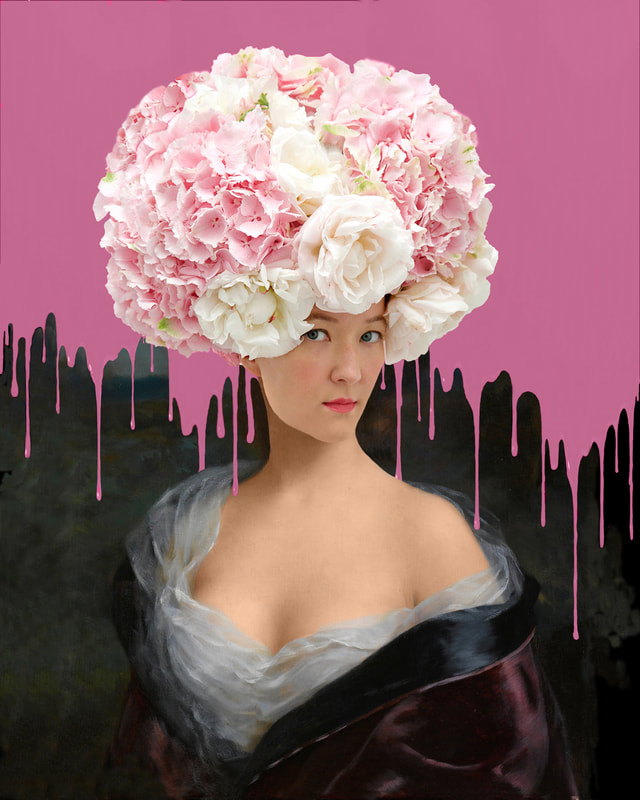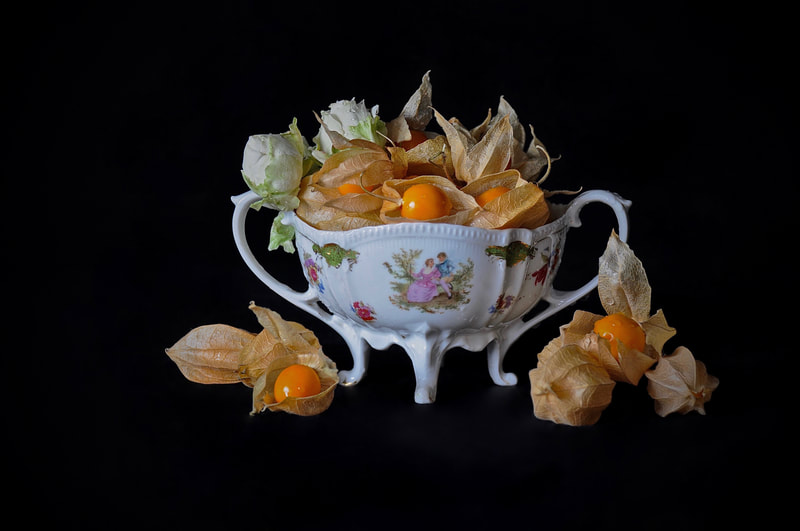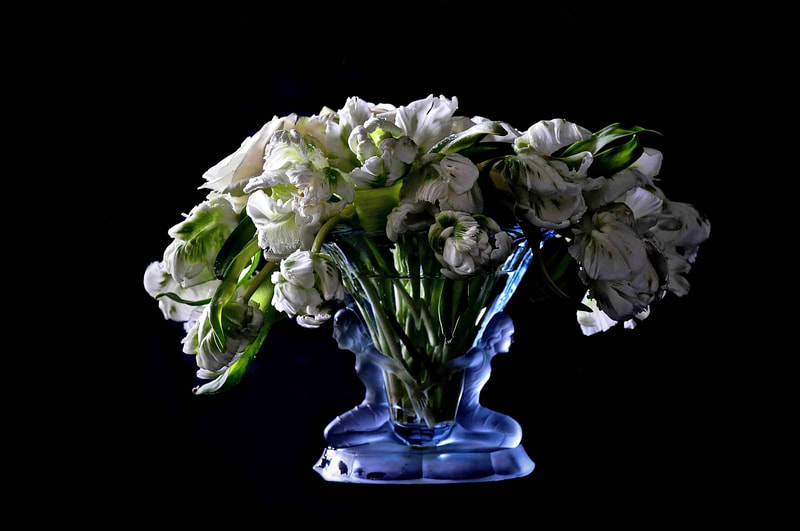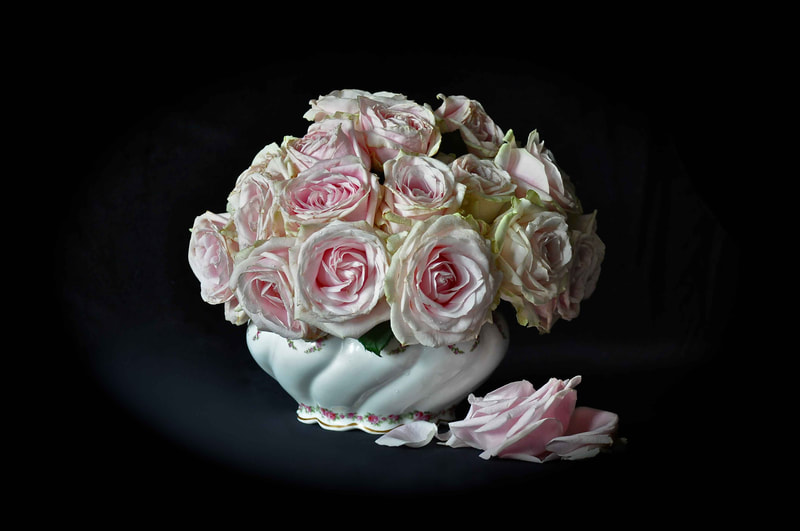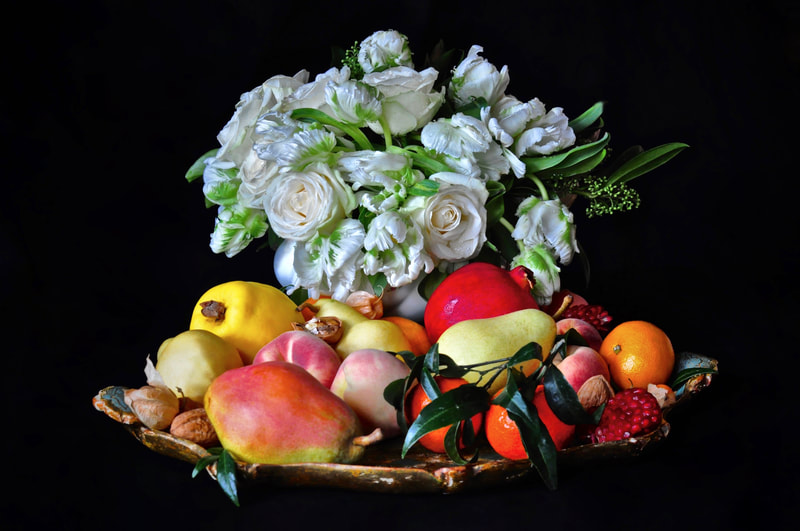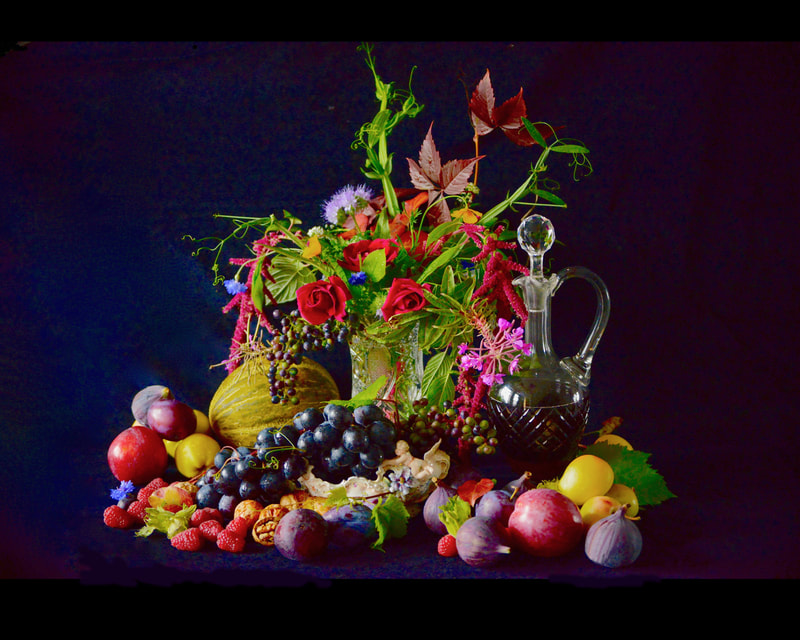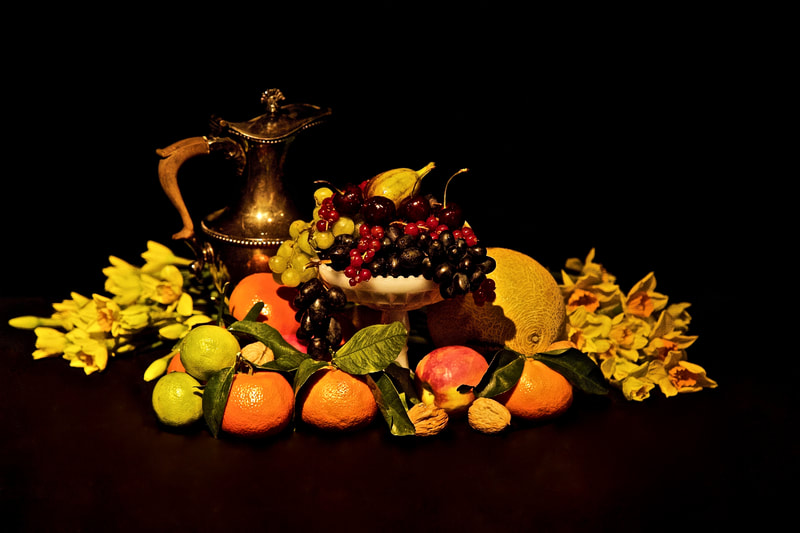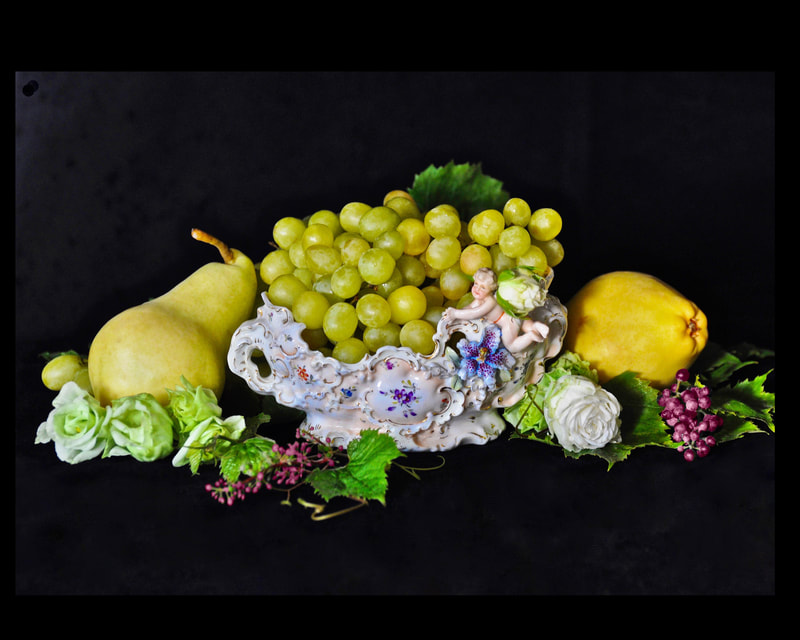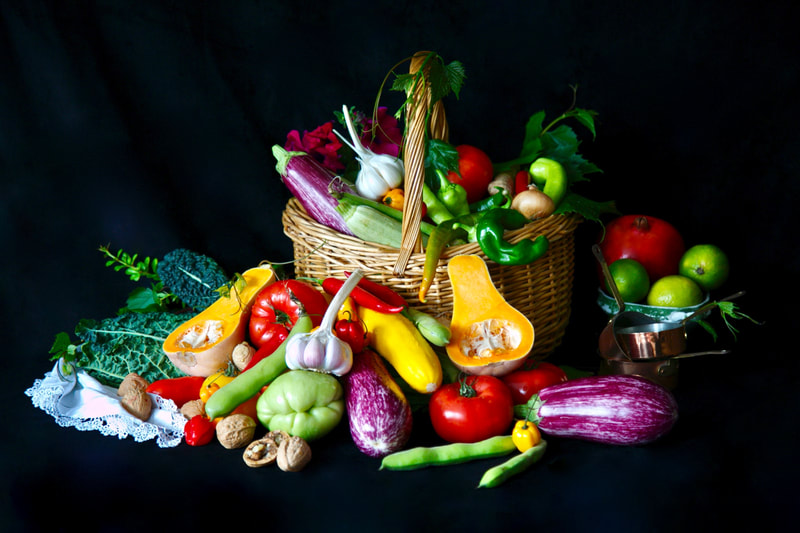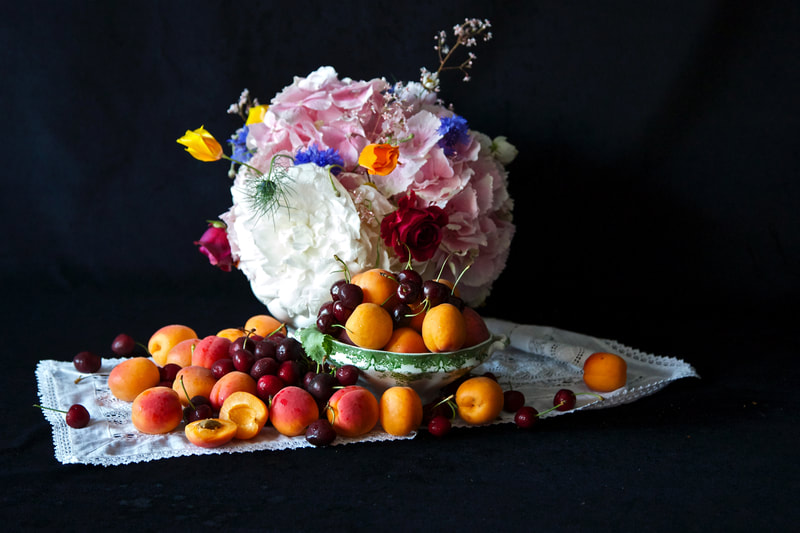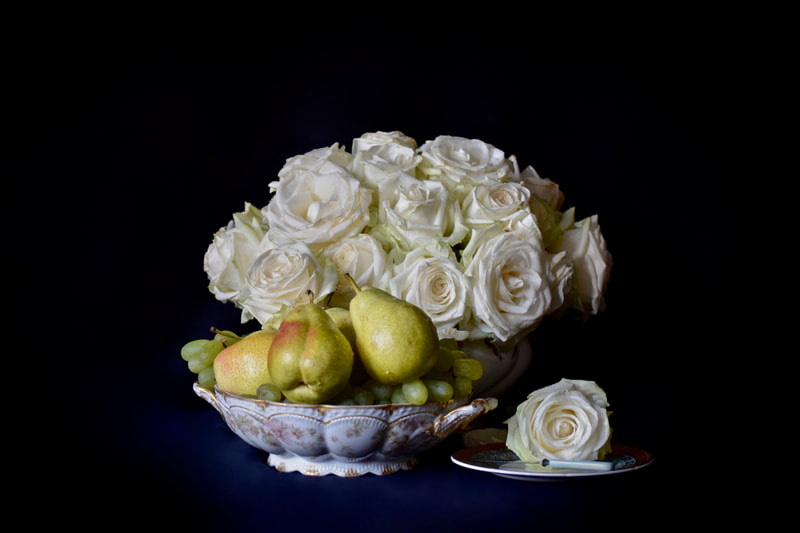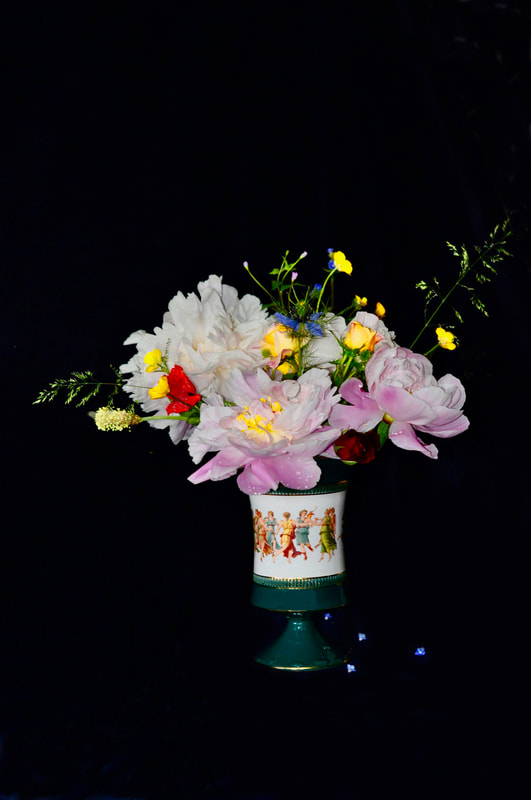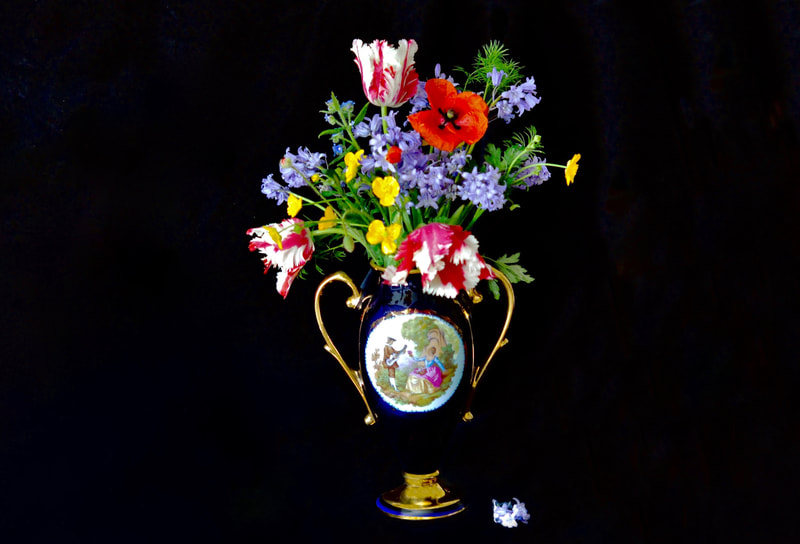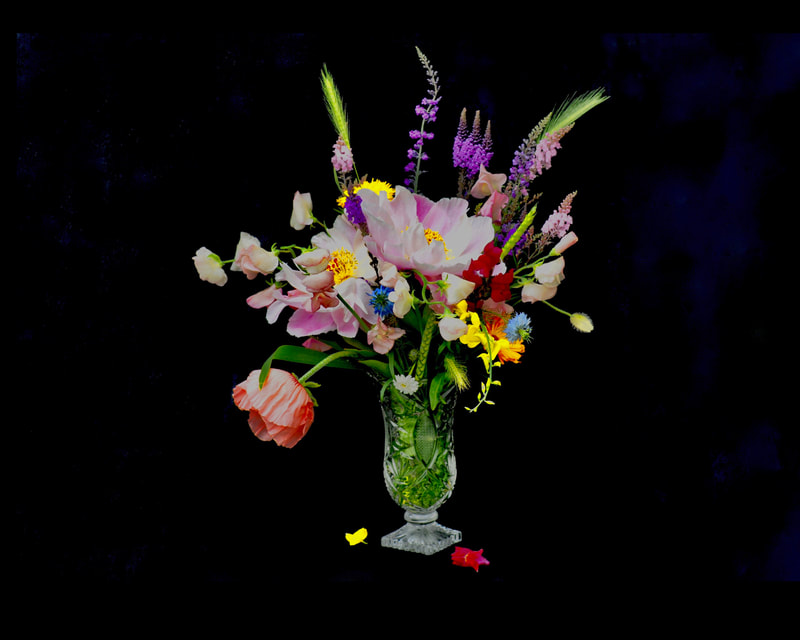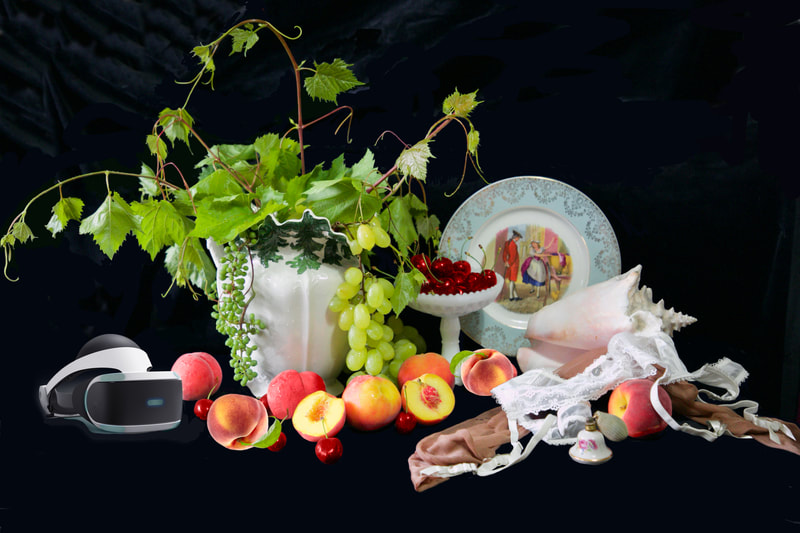Secrets Breed Secrets series, fig. 1 on Raphael, 2023, 145x115cm
I particularly admire Old Masters paintings. I am fascinated by their unsurpassed technical qualities, their mysterious representation of dramatic light and their masterful use of composition. However, I appreciates not only their technical skill but also their incredible ability to convey to a viewer the subtext of the picture hidden behind the symbolic meanings of colours and details. Many Renaissance masterpieces, with their unique placement of objects and use of distinctive colour palettes, are coded ‘books’ filled with secrets and hints. You just need to know the ciphers for these codes to understand what their author wanted to convey.
As Old Masters paintings came to have a big influence on me, I developed contextual ideas in the stage photographic series by encoding the images with symbolic meanings through the use of objects and colours.
A few years ago my vision had started to drastically deteriorate. I can now only see the blurry silhouettes with the double vision effect. This was one of the reasons why I started to use the superimposition technique (in which two images are simultaneously visible over each other) in my art practice. I decided to show how I see the world around me – just blurry multiple silhouettes... My brain needs to create a description and explanation to every image that I see and how they “connect” to each other. On the semiotic level connection between them is made through signs, themes, and memory. By linking one image with another, a resulting third meaning is ultimately conceived, metaphorically. Two concepts are associated when they occur in the same thought experience; thinking of one will then cause the recall of the entire experience, in which the other concept is also present.
The layering of images on top of one another creates a new meaning and makes an impression on an almost subliminal level. This technique gave me an opportunity to communicate the multiple messages that I aimed to embed in my works.
MAY YOU LIVE IN INTERESTING TIMES series
For my latest project May You Live in Interesting Times using the superimposition technique I combined the iconic images of the Old Masters paintings with self-portraits from my Masquerade series.
May you Live in Interesting Times series introduces a reflection on the situation in the globalised and toxic context we live in today. Masks take on a social critique role; denounce the hypocrisy of the modern times.
May you Live in Interesting Times series introduces a reflection on the situation in the globalised and toxic context we live in today. Masks take on a social critique role; denounce the hypocrisy of the modern times.
MASQUERADE series
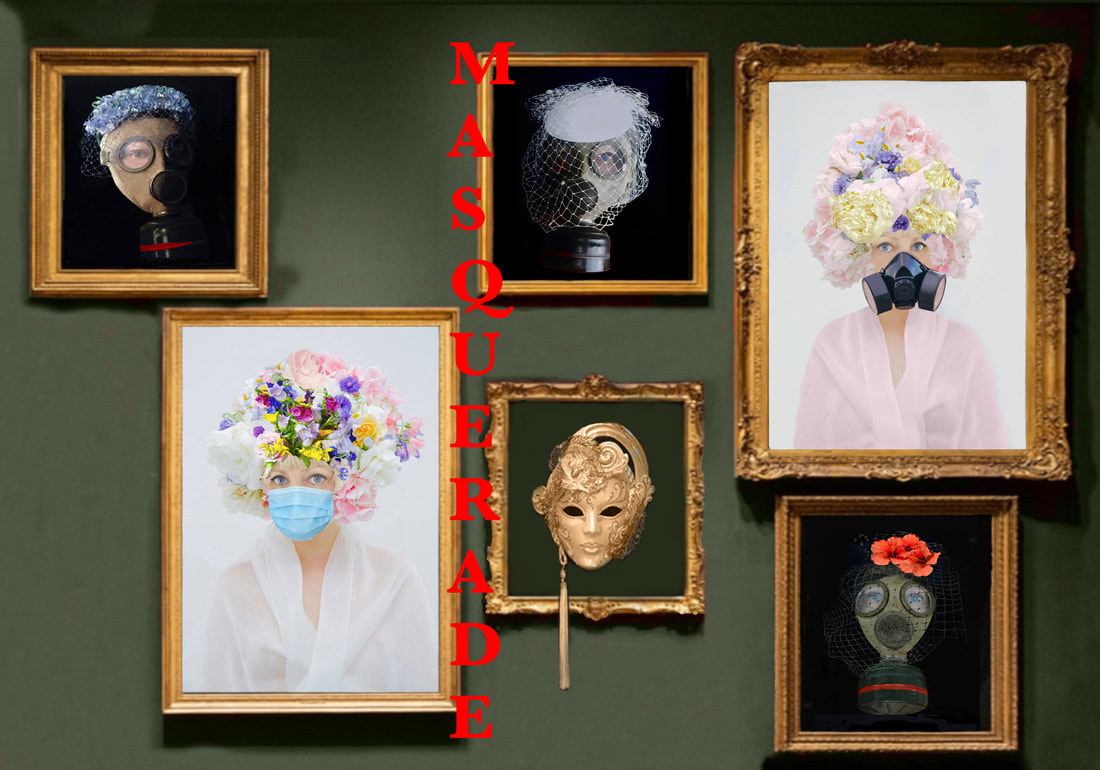 Some self-portraits in masks and gas masks from the "Masquerade" series.
Some self-portraits in masks and gas masks from the "Masquerade" series.
LADY WITH AN ERMINE series
During my Professional Doctorate studies I created a series of forty-eight stage photographs dealing with gender inequality and the female role in society issues by re-enacting Leonardo da Vinci’s painting Lady with an Ermine(1489–1491).
The idea to create the project was influenced by the thorough research on Leonardo da Vinci’s women portraits.
My interest and knowledge of art history, natural curiosity, and certain objects from my private collection of antique costumes, accessories and armour, have served as inspiration and have helped me to develop the project. The initial idea was to use iconic imagery of the Lady with an Ermine by Leonardo da Vinci as a recognisable ‘constant’, and play with posture and gesture, to add different layers.
In this project I reconstruct the subject of Leonardo da Vinci's painting, that was an allegorical apotheosis of the female role in Renaissance society. Reading a system of signs and symbols of objects and colours produce the meaning and interpretation of my work.
Model - Olga Bluma.
The idea to create the project was influenced by the thorough research on Leonardo da Vinci’s women portraits.
My interest and knowledge of art history, natural curiosity, and certain objects from my private collection of antique costumes, accessories and armour, have served as inspiration and have helped me to develop the project. The initial idea was to use iconic imagery of the Lady with an Ermine by Leonardo da Vinci as a recognisable ‘constant’, and play with posture and gesture, to add different layers.
In this project I reconstruct the subject of Leonardo da Vinci's painting, that was an allegorical apotheosis of the female role in Renaissance society. Reading a system of signs and symbols of objects and colours produce the meaning and interpretation of my work.
Model - Olga Bluma.
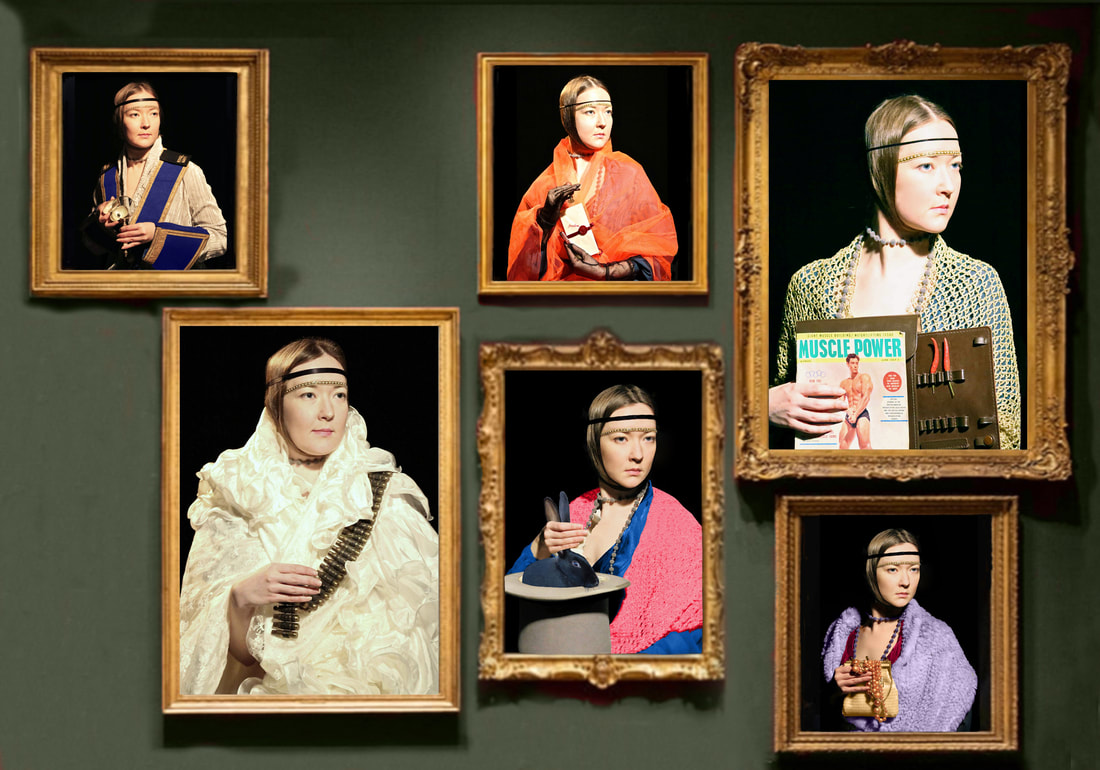 Some of staged photographs from the "The Lady with an Ermine" series.
Some of staged photographs from the "The Lady with an Ermine" series.
In 2022-2023 I created a series of collages by combining the iconic image of the Lady with an Ermine by Leonardo da Vinci with my images of staged photographs. The concept of juxtaposition creates thought-provoking metaphors for the viewer to react to. By linking one image with another, a resulting third meaning is ultimately conceived, metaphorically. This third metaphorical meaning acts as a device that allows the viewer to choose new conclusions.
COLOUR STUDIES series
“To see a World in a Grain of Sand
And a Heaven in a Wild Flower,
Hold Infinity in the palm of your hand
And Eternity in an hour”
William Blake
And a Heaven in a Wild Flower,
Hold Infinity in the palm of your hand
And Eternity in an hour”
William Blake
The contextual ideas for the Colour Studies series are encoded through the symbolic meaning of colours and flowers.
My work is never quite what first appears to be. My images depict meticulously controlled compositions characterised by a classical aesthetic, tinged with poetic undertones of timeless desire and romantic.
For the Colour Studies series I arranged fragile flowers (they have many hidden meanings) into specific groupings to create developed meanings that invite the viewer to participate in ‘decoding’ the symbolic sense. “What could be more enchanting than a mystery? I suppose, only the love for the mystery and the quest which one embarks on in trying to solve it.”
My work is never quite what first appears to be. My images depict meticulously controlled compositions characterised by a classical aesthetic, tinged with poetic undertones of timeless desire and romantic.
For the Colour Studies series I arranged fragile flowers (they have many hidden meanings) into specific groupings to create developed meanings that invite the viewer to participate in ‘decoding’ the symbolic sense. “What could be more enchanting than a mystery? I suppose, only the love for the mystery and the quest which one embarks on in trying to solve it.”
STILL LIFE Series
In my Still Life series I create works that evoke Renaissance painting. I mix classical and modern aspects, and my artworks are multi-layered, containing their own little secrets that viewers are invited to discover.
The practice of depicting food and feasting in art stretches back from the Middle Ages to ancient Greece and Rome, where banquets and bacchanals were consuming passions celebrated in literature, painting, and mosaics. The symbolism of food and drink has roots in classical literature. Fruits, nuts, herbs and grain are discussed in treatises on farming and natural history, and they appear widely in mythology as attributes of gods and goddesses – eg grapes for Bacchus, the god of wine, and a sheaf of corn or wheat for Ceres, the grain goddess - and as metaphors for virtue and vice.
In the tradition of the still-life painting, many of the objects have individual symbolic meanings – they remind the viewer of the fleeting nature of earthly pleasures, the fragility of human life and the brevity of our existence. For example, books represent the range of human knowledge, while the musical instruments suggest the pleasures of the senses, “Because music was invented to keep spirits happy, as does wine” (Ripa in Meagher, 2009, p.3).
Fragile flowers have many hidden meanings. I arranged flowers for every photograph into specific groupings to create a developed meaning for the viewer to decode. On first viewing of these staged photographs, we are attracted by flowers. Their beauty is shown in an ideal state of bloom – but only in order to recall the vanities of earthy life, which is fleeting in nature. However, some Renaissance artists demonstrated the ability of art to freeze time and grant flowers eternal life.
The practice of depicting food and feasting in art stretches back from the Middle Ages to ancient Greece and Rome, where banquets and bacchanals were consuming passions celebrated in literature, painting, and mosaics. The symbolism of food and drink has roots in classical literature. Fruits, nuts, herbs and grain are discussed in treatises on farming and natural history, and they appear widely in mythology as attributes of gods and goddesses – eg grapes for Bacchus, the god of wine, and a sheaf of corn or wheat for Ceres, the grain goddess - and as metaphors for virtue and vice.
In the tradition of the still-life painting, many of the objects have individual symbolic meanings – they remind the viewer of the fleeting nature of earthly pleasures, the fragility of human life and the brevity of our existence. For example, books represent the range of human knowledge, while the musical instruments suggest the pleasures of the senses, “Because music was invented to keep spirits happy, as does wine” (Ripa in Meagher, 2009, p.3).
Fragile flowers have many hidden meanings. I arranged flowers for every photograph into specific groupings to create a developed meaning for the viewer to decode. On first viewing of these staged photographs, we are attracted by flowers. Their beauty is shown in an ideal state of bloom – but only in order to recall the vanities of earthy life, which is fleeting in nature. However, some Renaissance artists demonstrated the ability of art to freeze time and grant flowers eternal life.
Prints are available in different sizes and techniques
